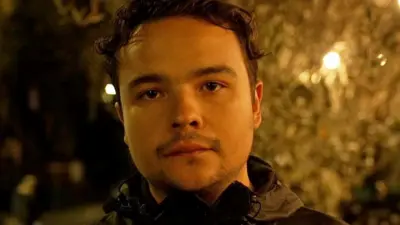We've updated our Privacy and Cookies Policy
We've made some important changes to our Privacy and Cookies Policy and we want you to know what this means for you and your data.
Councils setting out budget plans
- Author, Jamie McIvor
- Role, ґуПуґ«ГЅ Scotland correspondent
A number of councils across Scotland are debating how to spend the money they will have over the next 12 months.
Glasgow, Edinburgh, Highland, Borders, Dumfries and Galloway and Orkney councils are among those due to decide on their budgets, with many of the others to follow in the next fortnight.
The council tax freeze will continue for another year.
In fact, it is now six years since bills increased, while last year Stirling Council reduced bills.
Despite the hard choices facing councils, increasing the council tax is not a realistic option.
Typically, about 80p of every ВЈ1 spent by a council comes directly from the Scottish government and not from money raised by the council tax.
Changed hands
If a council wanted to put up the council tax, it would lose some of its funding from the government so the rise in the council tax would have to be substantial to be worthwhile - and such a rise would probably prove politically unacceptable.
One thing has changed since last year though.
A number of councils changed hands after the council elections in May.
Inevitably new administrations sometimes have different priorities so may want to spend more or less on particular projects.
However the total amount available to councillors is no different. Choosing to spend more on something may be seen as a case of robbing Peter to pay Paul.
The exact amount of money each council gets from the government is worked out through a complex formula.
While some may get more or less than in previous years - or would argue that the formula should be changed - broadly speaking this year's budget can be described as a standstill budget.
The absolute amount being given to councils for local services is not being cut.
But, of course, costs are rising with inflation while the demand for some services is also increasingly rising.
In some cases this is because the population as a whole is growing older, in other cases because of current challenges such as the stagnant economy.
The biggest cut over the past few years has been in the number of council workers.
According to trade union Unison, the number of people working in local government has dropped 34,500 since 2008.
Direct impact
Only a small number have been compulsory redundancies though - most of the fall is accounted for by voluntary redundancies, retirements and unfilled vacancies.
The union would say local government has taken more than its fair share of public spending and job cuts.
The Scottish government, which would claim it is facing the squeeze too because of Westminster cuts, argues it is giving councils a better share of the available resources.
Still, after several years of council cuts it might be argued that the direct impact on the wider public has been limited.
Of course, particular proposals have been contested - and there have been controversies - but there have been relatively few stories about dramatic cuts in popular local services.
There have few instances of cuts such as turning off streetlights overnight, even if some councils have been looking at how they can make the service more efficient.
Trading standards
Some might argue the effect has been much more subtle, describing them as "stealth cuts".
With jobs or budgets cut, there might be instances where a service is provided by fewer staff.
There might be no dramatic headline about a cut but unions fear these staff could be working longer hours or face increased workloads.
The risk then is simply that a service might not be as good as it used to be or indeed as good as staff and managers would want it to be.
Last week the Accounts Commission warned of a risk to the quality of the trading standards service provided by councils.
Many councils have been trying to run programmes to help them implement cuts and savings over several years and have been carrying out consultation exercises, explaining the situation they are in and presenting the public with truly unpalatable choices to help explain why some unpopular, but less unsavoury, decisions are being taken.
But the fear of some is that each round of cuts and savings becomes harder and that as long as the austerity programme continues, unpalatable options could soon become more widespread.
Others believe that by trying to focus on the services which matter most to voters and by being prepared to think outside the box, it might be possible to maintain good services even if this could mean a difficult period of change for some staff.
Top Stories
More to explore
Most read
Content is not available








